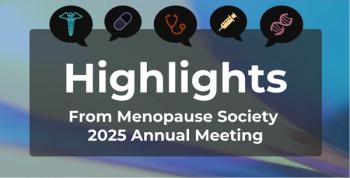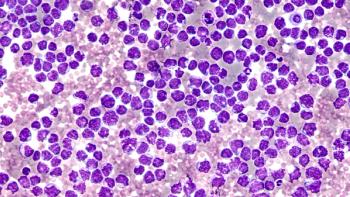
Which Demographic, Environmental Factors Have Higher Risks for RSV Hospitalization?
Knowledge on respiratory syncytial virus (RSV) risk factors may help inform public health authorities on high-risk populations, researchers suggest.
When evaluating possible risk factors for
This systemic review and meta-analysis is published in the
“Although existing evidence from community-based studies is still limited, we identified indoor air pollution as a possible risk factor for developing RSV-ALRI in the community, increasing the risk by 45%,” wrote the researchers of the study. “Besides, a wide range of demographic, pre- and post- neonatal, household and environmental, and health and medical condition related factors were identified that increased the risks for RSV-ALRI hospitalization by 14% to 355%.”
While there are no specific RSV treatments, many advances have been made in prophylactic immunization for protecting infants. For instance, the FDA approved nirsevimab-alip (Beyfortus) for prevention of RSV.2 Therefore, the researchers of this study believe it is important to identify children with risk factors for developing RSV-ALRI to optimize RSV prevention and raise awareness to the public.
Based on a
A total of 5924 studies were identified. After screening and exclusion, the researchers included 21 studies from the previous review and 26 new studies (n = 47).
Indoor air pollution was identified as a possible risk factor for developing RSV-ALRI in children under 5 years (OR, 1.45; 95% CI, 1.10-1.90). Male sex was also associated with higher risks for RSV-ALRI hospitalization (OR, 1.23; 95% CI, 1.19-1.27). Another demographic factor associated with higher risks for RSV-ALRI hospitalization included Māori and Pacific ethnicity compared with European or other ethnicities.
The researchers also identified a list of pre- and post-neonatal factors including, prematurity, low birth weight, small for gestational age, maternal smoking during pregnancy or lactation, maternal age younger than 30 years vs age 30 to 34 years, multiparity, and cesarian vs vaginal birth.
Additionally, household and environmental factors included having siblings, passive smoking, maternal asthma, and daycare center attendance. Meanwhile, health and medical conditions included any chronic diseases, bronchopulmonary dysplasia, HIV infections, congenital heart disease, Down syndrome, cystic fibrosis, and previous asthma.
However, the researchers acknowledge some limitations to the study, including that more than 70% of the included studies were based on evidence from Hospital Incident Command systems, having high heterogeneities among the included studies, and the potential for confounding bias within the studies.
Despite these limitations, the researchers believe the study adds evidence of significant risk factors for RSV-ALRI hospitalizations, which may inform both public health authorities and raise awareness for high-risk individuals.
“The reported effect size of these risk factors in this study provides important input data for estimating the public health impact of reducing or eliminating certain risk factors, such as indoor air pollution,” wrote the researchers. “These data could also be used to support the development of individual risk prediction models for RSV-ALRI.”
References
1. Deng S, Cong B, Edgoose M, et al. Risk factors for respiratory syncytial virus-associated acute lower respiratory infection in children under five years: An updated systematic review and meta-analysis. Int J Infect Dis. Published online June 28, 2024. doi:10.1016/j.ijid.2024.107125
2. Bonavitacola J. FDA approves Beyfortus for Use in Infants With RSV. July 17, 2023.
Newsletter
Stay ahead of policy, cost, and value—subscribe to AJMC for expert insights at the intersection of clinical care and health economics.













































